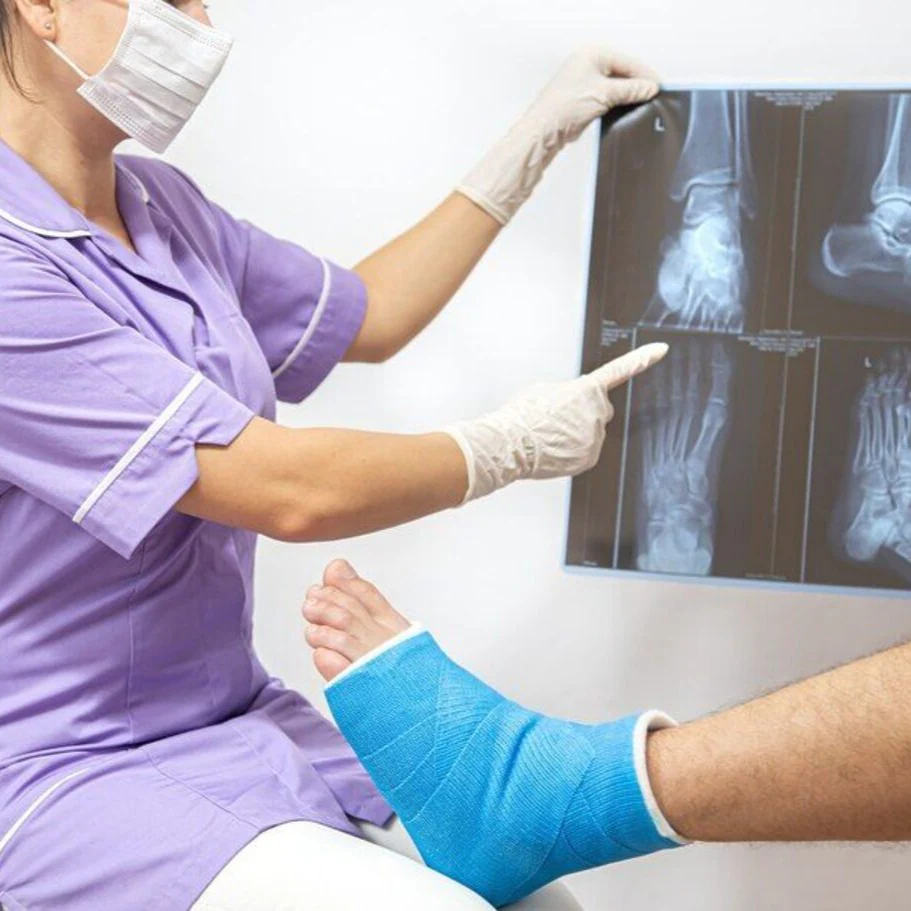How Does Robotic Knee Replacement Work
Dr. Anoop Jhurani is one of the knee & hip replacement doctors in Jaipur. He has performed over 12,000 successful knee and hip surgeries.
Share this Post to earn Money ( Upto ₹100 per 1000 Views )

Robotic knee replacement surgery has emerged as a groundbreaking advancement in orthopedic care, offering patients enhanced precision, faster recovery times, and superior outcomes. Dr. Anoop Jhurani is a leading expert in robotic knee replacement in Jaipur, India, consistently delivering flawless results and ensuring his patients swiftly return to their regular lives.
Robotic Assistance: Enhancing Precision
The cornerstone of robotic knee replacement is the use of advanced computer software and robotic-handled arm technology. Here’s how it works:
1. Pre-Surgical Planning: Before the surgery, a detailed 3D model of the patient’s knee is created using imaging techniques such as CT scans or MRIs. This model helps the surgeon to plan the procedure with pinpoint accuracy, customizing the approach to the patient’s unique anatomy.
2. Intraoperative Guidance: During the surgery, the robotic system provides real-time data and feedback to the surgeon. The robotic arm, guided by the pre-surgical plan and controlled by the surgeon, assists in making precise cuts and positioning the implant with exceptional accuracy. This technology ensures that the prosthesis is perfectly aligned and balanced, reducing the risk of complications and enhancing the longevity of the implant.
3. Reduced Possibility of Error: The robotic system’s ability to provide accurate information and assistance minimizes the possibility of human error. This leads to a more reliable and successful outcome, ensuring the joint functions as naturally as possible post-surgery.
Benefits of Robotic Knee Replacement
1. Enhanced Precision: The use of robotic technology allows for meticulous surgical planning and execution. This precision results in better alignment of the implant, which is crucial for the overall function and longevity of the knee joint.
2. Faster Recovery: Smaller incisions and more accurate surgical techniques contribute to quicker healing times. Patients typically experience less pain, reduced swelling, and a shorter hospital stay, enabling them to resume daily activities sooner.
3. Improved Outcomes: The accuracy of the robotic-assisted procedure leads to improved balance and alignment of the knee joint, which can result in better mobility, reduced joint pain, and a lower early failure rate of the implant.
4. Minimized Blood Loss: The precision of robotic surgery helps to minimize tissue damage and blood loss during the procedure, further contributing to a smoother recovery process.
5. Extended Implant Longevity: With better alignment and balance, the prosthesis is less likely to wear unevenly, extending the lifespan of the implant and reducing the need for revision surgery.
Conclusion
Robotic knee replacement surgery represents a significant leap forward in orthopedic care, offering unparalleled precision and improved patient outcomes. For those seeking a reliable and effective solution to knee pain, particularly in Jaipur, India, Dr. Anoop Jhurani is the expert to consult. His use of advanced robotic technology ensures patients receive the best possible care, leading to faster recovery and long-lasting results.





